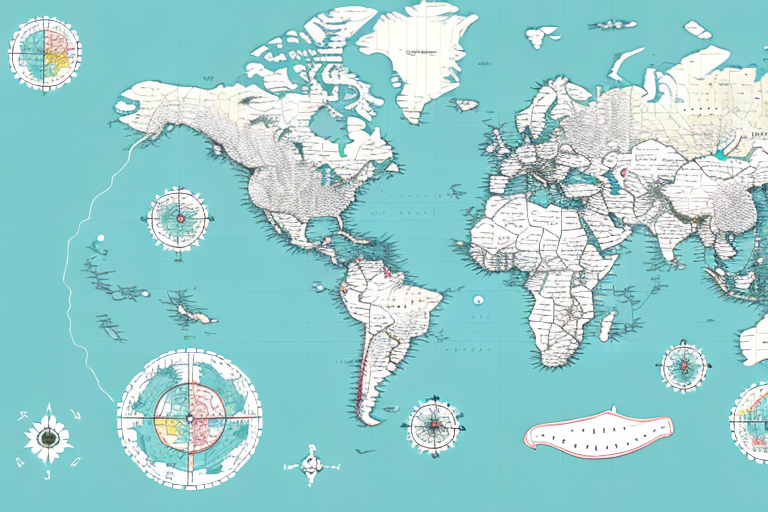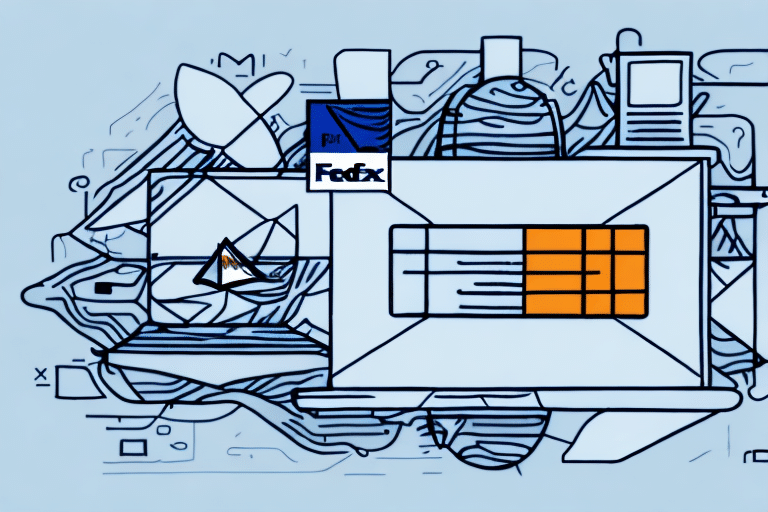Understanding UPS Shipping Rates from 30303 to 91030
Shipping is an essential component of any business that deals with physical products. For businesses that rely on shipping, one of the major concerns is shipping rates. UPS is one of the leading carriers in the US, and their rates can affect how much businesses spend on shipping. In this article, we will cover everything you need to know about UPS shipping rates from ZIP codes 30303 to 91030.
What are UPS Shipping Rates?
UPS shipping rates are the charges applied to ship packages from one location to another. These rates are determined based on various factors including:
- Package size and weight
- Destination address
- Selected shipping service
- Additional services such as insurance and signature confirmation
UPS offers a range of shipping services, including Ground, Air, and International shipping. Each service comes with its own set of rates tailored to meet different delivery speed and cost requirements.
Additionally, UPS provides discounts on shipping rates for businesses that frequently ship packages. These discounts are based on factors like the volume of shipments and the type of service used. To help customers estimate shipping costs, UPS offers a shipping calculator on their website. This tool allows users to input package details and destination to find the most cost-effective shipping option.
Factors That Affect UPS Shipping Rates
Several factors influence UPS shipping rates, including:
- Package Weight and Dimensions: Larger and heavier packages generally cost more to ship than smaller ones.
- Distance and Destination: The farther the package needs to travel, the higher the shipping cost. Domestic versus international destinations also play a role.
- Shipping Service: UPS offers various services (e.g., Ground, Next Day Air, 2nd Day Air) each with different rates based on delivery speed.
- Additional Services: Services such as insurance, signature confirmation, and residential delivery can add to the total shipping cost.
- Type of Item: Items classified as hazardous or fragile may require special handling, increasing shipping costs.
- Time of Year: Peak seasons, like holidays, often see increased shipping rates due to higher demand.
Understanding these factors can help businesses plan and optimize their shipping strategies to minimize costs.
How to Calculate the Cost of Shipping via UPS
Calculating the cost of shipping via UPS involves considering several key factors. Here's how you can accurately estimate your shipping costs:
-
Use the UPS Shipping Calculator:
UPS provides an online shipping calculator that allows you to input package details such as weight, dimensions, and destination. By selecting the appropriate shipping service, you can obtain an accurate cost estimate tailored to your specific needs.
-
Consider the Type of Package:
Different types of packages may incur varying rates. For instance, shipping fragile items or hazardous materials may require special handling and packaging, leading to increased costs. Ensure that you properly label your package and choose the correct service to avoid additional fees or potential delays.
-
Account for Business Discounts:
UPS offers discounted rates for businesses that ship frequently. By signing up for a UPS business account, you can take advantage of volume-based discounts, reducing your overall shipping expenses. Additionally, look out for promotional discounts that UPS may offer periodically.
By systematically evaluating these factors, you can determine the most cost-effective shipping options for your business.
How to Compare UPS Shipping Rates with Other Carriers
To identify the most cost-effective shipping solutions for your business, it is crucial to compare UPS shipping rates with those of other carriers. Here’s how you can effectively perform this comparison:
- Identify Alternative Carriers: Consider other major carriers such as FedEx, DHL, and USPS as alternatives to UPS.
- Utilize Third-Party Comparison Tools: Platforms like ShipStation allow you to compare rates from multiple carriers simultaneously, saving you time and ensuring you get the best deal.
-
Evaluate Key Factors: When comparing rates, consider not only the cost but also:
- Delivery time — How quickly the package needs to arrive.
- Reliability — Carrier track record for on-time deliveries.
- Customer service — Quality of support provided by the carrier.
- Additional fees — Such as fuel surcharges, residential delivery fees, and special handling fees.
- Check for Hidden Costs: Some carriers may advertise lower base rates but include additional fees that can increase the overall cost. Ensure you account for all potential charges when making your comparison.
By thoroughly evaluating these aspects, you can select the carrier that best meets your business’s shipping requirements while optimizing costs.
The Difference Between UPS Ground and Expedited Shipping Rates
When choosing a UPS shipping service, it's important to understand the differences between UPS Ground and Expedited Shipping options. Each service caters to different business needs and budgets.
UPS Ground Shipping
UPS Ground is a cost-effective shipping option ideal for businesses that do not require urgent delivery. It typically delivers packages within 1-5 business days, depending on the distance between the shipping origin (30303) and the destination (91030).
Advantages of UPS Ground:
- Lower shipping costs compared to expedited services.
- Reliable delivery times for non-urgent shipments.
- Suitable for bulky or heavy packages that would be cost-prohibitive to ship via air.
Expedited Shipping Services
Expedited Shipping options, such as UPS Next Day Air, UPS 2nd Day Air, and UPS 3 Day Select, offer faster delivery times for more urgent shipments.
Advantages of Expedited Shipping:
- Faster delivery times ranging from next day to three days.
- Ideal for time-sensitive or high-value shipments.
- Enhanced tracking and handling options.
Cost Considerations: Expedited shipping services are generally more expensive than UPS Ground. The cost varies based on package size, weight, and specific service chosen. Additionally, certain areas may have higher delivery costs or may not be eligible for some expedited services.
Businesses should assess the urgency and value of their shipments to determine whether the additional cost of expedited shipping is justified.
Understanding UPS Surcharges and Fees
When shipping with UPS, it's important to be aware of various surcharges and fees that can impact the total cost. Understanding these additional charges can help you better estimate shipping expenses and avoid unexpected costs.
Common UPS Surcharges and Fees:
- Residential Delivery Surcharge: Applies when delivering to a residential address instead of a business address.
- Fuel Surcharge: Adjusted based on fluctuations in fuel prices, this surcharge can vary periodically.
- Address Correction Fee: Charged if there is an error in the recipient's address that requires correction by UPS.
- Oversize Package Fee: Applied to packages that exceed UPS's standard size and weight limits.
- Peak Surcharge: Imposed during peak shipping seasons like holidays, leading to higher shipping costs.
- Delivery Area Surcharge: Applied for deliveries to remote or hard-to-reach areas, increasing the shipping cost.
Key Surcharges to Watch For:
- Peak Surcharge: During high-demand periods such as the holiday season, UPS applies a peak surcharge, which can significantly increase your shipping costs. Planning your shipments ahead of peak times can help mitigate these additional charges.
- Delivery Area Surcharge: If you frequently ship to remote or rural areas, this surcharge can add to your costs. It's essential to factor in this fee when calculating shipping expenses to these locations.
- Fuel Surcharge: Since fuel prices fluctuate, the fuel surcharge can vary, affecting your overall shipping cost. Keeping an eye on fuel trends can help anticipate changes in this surcharge.
By understanding and accounting for these surcharges and fees, businesses can more accurately budget for their shipping needs and identify areas where costs can be optimized.
Strategies to Save Money on UPS Shipping Rates
Managing shipping costs is vital for maintaining profitability. Here are several strategies to help you save money on UPS shipping rates:
- Negotiate Better Rates: Contact UPS to negotiate discounted rates, especially if your shipping volume is high. Establishing a strong relationship with UPS can lead to more favorable pricing.
-
Use a Third-Party Logistics (3PL) Provider: Engaging a 3PL can leverage their shipping volume to secure lower rates and manage logistics more efficiently. Services like ShipStation can help compare rates and optimize shipping processes.
ShipStation - Consolidate Orders: Combining multiple packages going to the same destination into a single shipment can reduce overall shipping costs by taking advantage of bulk shipping discounts.
- Utilize UPS Flat-Rate Shipping: UPS offers flat-rate shipping options which can be more cost-effective for certain package sizes and weights, regardless of the destination within the specified region.
- Optimize Packaging: Use appropriately sized packaging to minimize dimensional weight charges. Ensure that packages are neither too large nor too heavy, avoiding unnecessary costs.
- Implement Eco-Friendly Packaging: Some carriers provide discounts for using sustainable packaging materials. Eco-friendly practices not only reduce costs but also enhance your business’s environmental credentials.
Implementing these strategies can lead to significant savings on your UPS shipping costs, allowing you to allocate resources more effectively within your business.
How to Negotiate Better Rates with UPS
Negotiating better shipping rates with UPS can result in substantial cost savings. Here are steps and tips to help you secure more favorable rates:
-
Assess Your Shipping Needs:
Analyze your shipping volume, package sizes, destinations, and service requirements. Understanding your shipping patterns will help you present a clear case for discounts.
-
Prepare Your Shipping Data:
Gather data on your shipping history, including the number of packages shipped, total spend, and frequency of shipments. This information demonstrates your value as a customer to UPS.
-
Contact UPS Sales Representative:
Reach out to your UPS account representative or contact UPS Sales directly. Clearly communicate your desire for better rates and provide your shipping data to support your request.
-
Leverage Competitive Rates:
Show UPS that you are exploring other carriers’ rates. If UPS competes effectively, they may offer discounts to retain your business.
-
Consider Consolidating Shipments:
If you have multiple packages going to the same destination, try to combine them into one shipment. This can help you qualify for volume discounts and reduce your overall shipping costs.
-
Stay Informed on UPS Policies:
Keep up-to-date with UPS’s pricing structures and policies. Understanding any changes or promotions can give you leverage during negotiations.
Additionally, consider using shipping software to compare rates across multiple carriers and provide data-driven insights that can bolster your negotiation efforts.
Finding the Best Time to Ship with UPS for Optimal Savings
Strategically timing your shipments can lead to significant savings on UPS shipping rates. Consider the following factors to determine the optimal times for shipping:
- Ship During Off-Peak Hours and Days: Shipping during weekdays, particularly Tuesdays and Wednesdays, can result in lower rates compared to peak days like Mondays and Fridays when demand is higher.
- Avoid Peak Holiday Seasons: Shipping rates tend to increase during major holidays such as Christmas and Thanksgiving due to heightened demand. Planning shipments well in advance can help you avoid surge pricing and ensure timely deliveries.
- Leverage Promotional Discounts: UPS occasionally offers promotional rates during specific times of the year. Staying informed about these promotions can help you take advantage of reduced shipping costs when available.
- Utilize Volume Shipping: Batch your shipments during slower periods to accumulate a higher shipping volume, which can qualify you for bulk shipping discounts.
- Monitor Fuel Surcharges: Fuel surcharges fluctuate based on current fuel prices. Shipping when fuel surcharges are lower can reduce overall shipping costs.
By aligning your shipping schedule with these optimization strategies, you can minimize shipping expenses while maintaining efficient delivery timelines.
Tips for Packaging and Labeling Your Shipments to Avoid Extra Fees
Proper packaging and labeling are crucial for avoiding unnecessary fees and ensuring your shipments are handled efficiently by UPS. Here are some tips to help you minimize additional costs:
-
Use Appropriate Packaging Materials:
Select sturdy, high-quality packaging materials that protect your products during transit. This reduces the risk of damage and potential claims, which can incur additional fees.
-
Accurately Measure and Weigh Packages:
Ensure that you provide precise measurements and weight for each package. Overestimating dimensions or weight can lead to higher shipping costs, while underestimating may result in additional fees or delivery delays.
-
Follow UPS Packaging Guidelines:
Adhere to UPS's packaging standards to prevent oversize or improperly packaged items, which can attract surcharges. Review UPS's packaging requirements to ensure compliance.
-
Clearly Label Packages:
Ensure that all packages are correctly labeled with accurate addresses, including ZIP codes, to avoid address correction fees and delivery delays.
-
Avoid Using Excessive Packing Materials:
While protection is important, using too much padding or unnecessary packaging can increase the package's size and weight, leading to higher shipping costs. Optimize your packaging to balance protection and efficiency.
-
Include Required Documentation:
For international shipments, include all necessary customs documentation to prevent delays and additional fees.
Implementing these packaging and labeling practices will help you avoid extra fees and ensure a smoother shipping process with UPS.
Understanding How Package Weight, Size, and Destination Impact Shipping Rates
Three primary factors that influence UPS shipping rates are package weight, size, and destination. Understanding how each affects your shipping costs can help you make informed decisions to optimize expenses:
1. Package Weight
- Heavier Packages: Generally, the heavier the package, the higher the shipping cost. UPS uses weight and dimensional weight (DIM weight) pricing to determine charges. For most services, DIM weight or actual weight is used, whichever is greater.
- Lightweight Packages: While lighter packages cost less, small or lightweight items can sometimes be shipped more efficiently using UPS's tailored packaging options.
2. Package Size
- Oversize Packages: Packages that exceed UPS's standard size limits incur oversize fees. These fees vary based on dimensions and weight.
- Optimized Packaging: Using appropriately sized packaging can minimize size-related surcharges. Avoid using oversized boxes for small items.
3. Destination
- Domestic vs. International: Shipping within the same country (e.g., from 30303 to 91030) is typically less expensive than international shipping. International destinations may also involve customs fees and longer transit times.
- Distance: Greater distances within a country can increase shipping costs. Regional deliveries may be more cost-effective.
- Remote Areas: Deliveries to rural or hard-to-reach areas may incur additional surcharges due to increased handling and transportation requirements.
By carefully considering these factors, you can optimize your shipping strategy to balance cost and efficiency effectively.
Top Mistakes to Avoid When Using UPS for Shipping
Avoiding common shipping mistakes can help prevent extra fees and ensure timely deliveries. Here are some top mistakes to watch out for when using UPS:
-
Inaccurate Package Information:
Providing incorrect weight, dimensions, or destination details can lead to improper billing, potential delays, and additional fees for address corrections.
-
Insufficient or Improper Packaging:
Using inadequate packaging can result in damaged goods, which may lead to claims and fees. Ensure that your packaging meets UPS standards and adequately protects the contents.
-
Incorrect Address Labeling:
Missing or incorrect address information can cause delivery failures or returns, incurring extra costs. Double-check all address details before shipping.
-
Not Utilizing UPS Shipping Tools:
Failing to use UPS tools like the shipping calculator and tracking services can result in overspending or lack of visibility into shipment status.
-
Ignoring UPS Policies and Guidelines:
Not adhering to UPS policies regarding prohibited items, packaging standards, and service requirements can lead to shipment rejections or additional fees.
-
Poorly Timed Shipments:
Shipping during peak times without proper planning can result in higher costs and delivery delays. Plan your shipments to align with rate optimizations and ensure timely deliveries.
By avoiding these common mistakes, you can streamline your shipping process, reduce costs, and enhance overall efficiency with UPS.
The Benefits of Using a Third-Party Logistics Provider for Managing Your UPS Shipments
Engaging a third-party logistics provider (3PL) can offer significant advantages in managing your UPS shipments. Here are some key benefits:
-
Cost Savings:
3PL providers often have negotiated rates with carriers like UPS, allowing them to offer more competitive shipping rates than individual businesses can secure on their own.
-
Expertise and Efficiency:
3PLs specialize in logistics and shipping, bringing expertise that ensures your shipments are handled efficiently and correctly, reducing the likelihood of errors and delays.
-
Scalability:
As your business grows, a 3PL can scale your shipping operations accordingly, managing increased volume without the need for you to invest in additional infrastructure.
-
Technology Integration:
Many 3PLs offer advanced shipping software and integration with various e-commerce platforms, streamlining the shipping process and providing real-time tracking and reporting.
-
Focus on Core Business:
By outsourcing logistics, your business can allocate more time and resources to core activities such as product development and customer service.
-
Enhanced Customer Experience:
3PL providers can manage complex shipping requirements, ensuring timely and accurate deliveries that improve overall customer satisfaction.
Utilizing a 3PL can lead to more efficient shipping operations, cost reductions, and improved service quality, making it a valuable strategy for businesses looking to optimize their UPS shipping processes.
Case Studies: Successful Businesses That Have Saved Money on Their UPS Shipping Costs
Implementing effective shipping strategies can lead to substantial cost savings. Here are some case studies of businesses that successfully reduced their UPS shipping expenses:
Case Study 1: E-commerce Retailer Streamlines Packaging
An online retail business was incurring high shipping costs due to oversized and heavy packaging. By optimizing their packaging materials and choosing appropriately sized boxes, they reduced the dimensional weight charges. This change led to a 25% decrease in shipping costs without compromising product safety.
Case Study 2: Small Business Negotiates Better Rates
A small business frequently shipping products to various destinations negotiated a contract with UPS to secure lower rates based on their shipping volume. As a result, they achieved a 40% reduction in overall shipping expenses.
Case Study 3: Utilization of a 3PL Provider
A mid-sized company partnered with a third-party logistics provider to manage their UPS shipments. The 3PL leveraged their bulk shipping agreements to obtain discounted rates and implemented efficient routing strategies. This collaboration resulted in a 20% reduction in shipping costs and improved delivery timelines.
Case Study 4: Adoption of Shipping Software
A technology startup adopted shipping software to compare UPS rates with other carriers in real-time. By selecting the most cost-effective carrier for each shipment, they optimized their shipping expenses and saved approximately 15% annually.
These examples demonstrate that by assessing shipping needs, negotiating rates, optimizing packaging, and leveraging third-party resources, businesses can effectively reduce their UPS shipping costs and enhance operational efficiency.
In conclusion, UPS shipping rates from 30303 to 91030 are influenced by a variety of factors. Understanding these factors and implementing strategic cost-saving measures can help businesses minimize shipping expenses and improve their bottom line. Whether through rate negotiation, efficient packaging, or the use of third-party services, there are multiple avenues to optimize your UPS shipping operations.






















